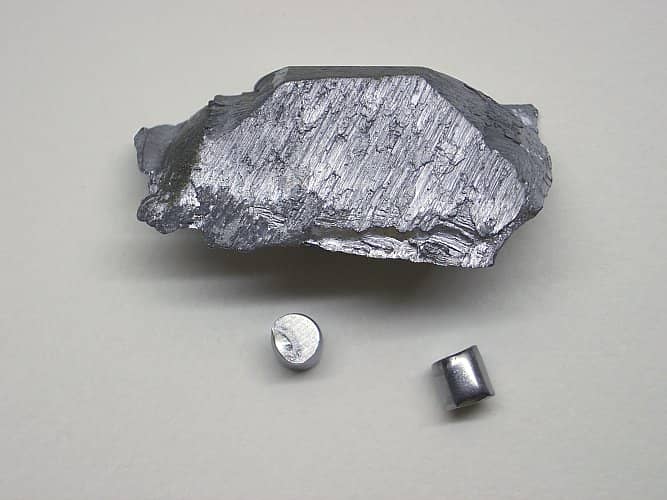Wiedmann-Franz Law simply states that metals that are good conductors of electricity are also good conductors of heat. This explains why things heat up during extended use. Metallic Vanadium Dioxide (VO2) is a metal product that defies this law and can conduct electricity without the heat to accompany it.
Vanadium Dioxide is already a metal product with unique properties. It has the ability to switch between being a conductor and an insulator when heated to 67 degrees Celsius. This deviation from the law might make it suitable for applications which other metals have a trouble with.
You can see the video below:
This discovery was made by a team of scientists from the Department of Energy’s Lawrence Berkely National Laboratory and the University of California. The researchers were themselves surprised at the discovery.
“This was a totally unexpected finding,” said lead researcher and physicist Junqiao Wu, from Berkeley Lab’s Materials Sciences Division. “It shows a drastic breakdown of a textbook law that has been known to be robust for conventional conductors. This discovery is of fundamental importance for understanding the basic electronic behavior of novel conductors.”
Upon further analysis, simulations, and X-ray scattering experiments, they discovered that the thermal conductivity attributed to the electrons in Vanadium Dioxide is ten times smaller than that directed by the Wiedemann-Franz Law and that the electrons moved in a manner similar to a fluid.
“The electrons were moving in unison with each other, much like a fluid, instead of as individual particles like in normal metals,” explained Wu. “For electrons, heat is a random motion. Normal metals transport heat efficiently because there are so many different possible microscopic configurations that the individual electrons can jump between. In contrast, the coordinated, marching-band-like motion of electrons in vanadium dioxide is detrimental to heat transfer as there are fewer configurations available for the electrons to hop randomly between.”
The story did not end there. They further discovered that Vanadium Dioxide can conduct varying amounts of electricity and heat. This can be adjusted by the introduction of other materials similar to doping of semiconductors. Adding Tungsten metal decreased the temperature at VO2 becomes metallic and made it a better heat conductor.
“This material could be used to help stabilize temperature,” said Fan Yang, a postdoctoral researcher at Berkeley Lab’s Molecular Foundry and co-lead author on the study. Yang added that a lot of work still needed to be done before Vo2 can be commercialized but said that this metal could minimize the heat losses in an engine and serve as a building material allowing you to cool down the house without using air conditioners or prevent the heat from escaping in cold weather.

